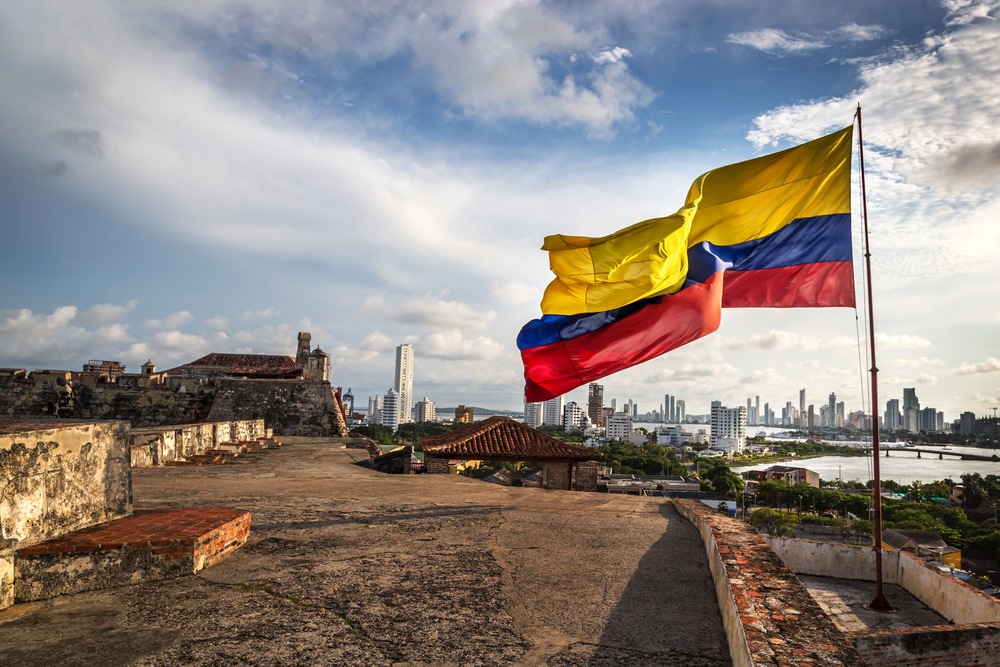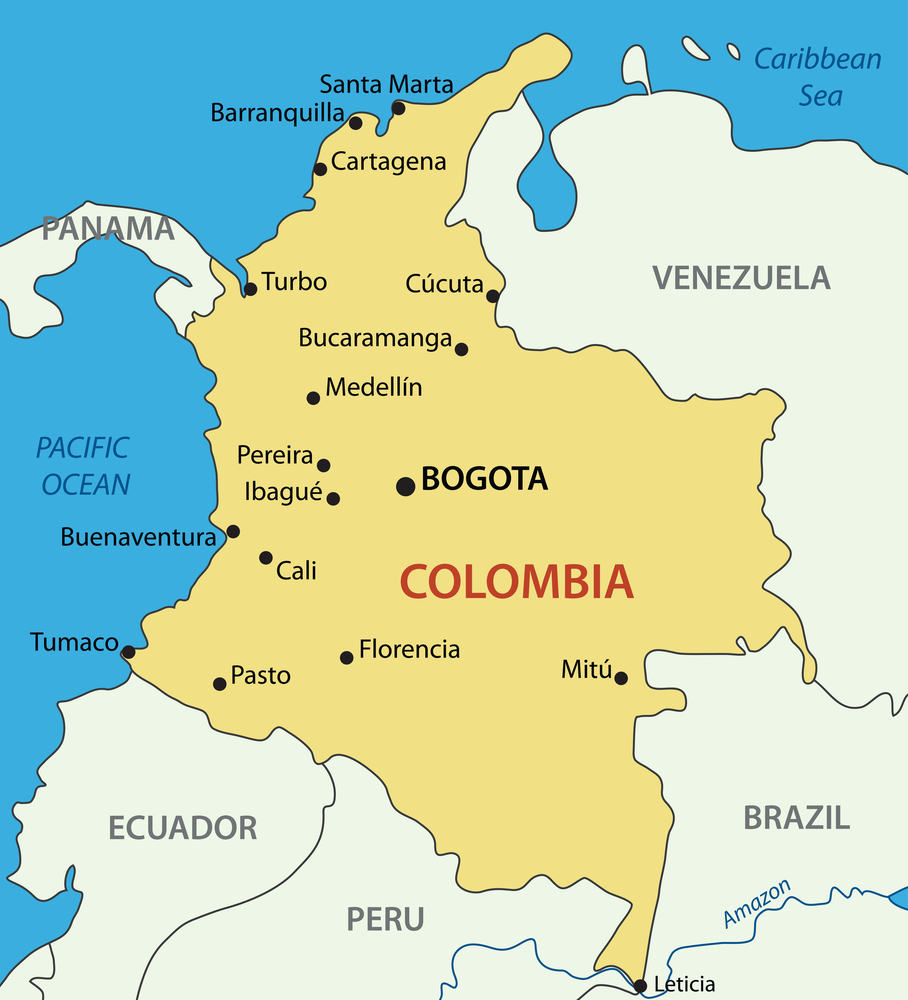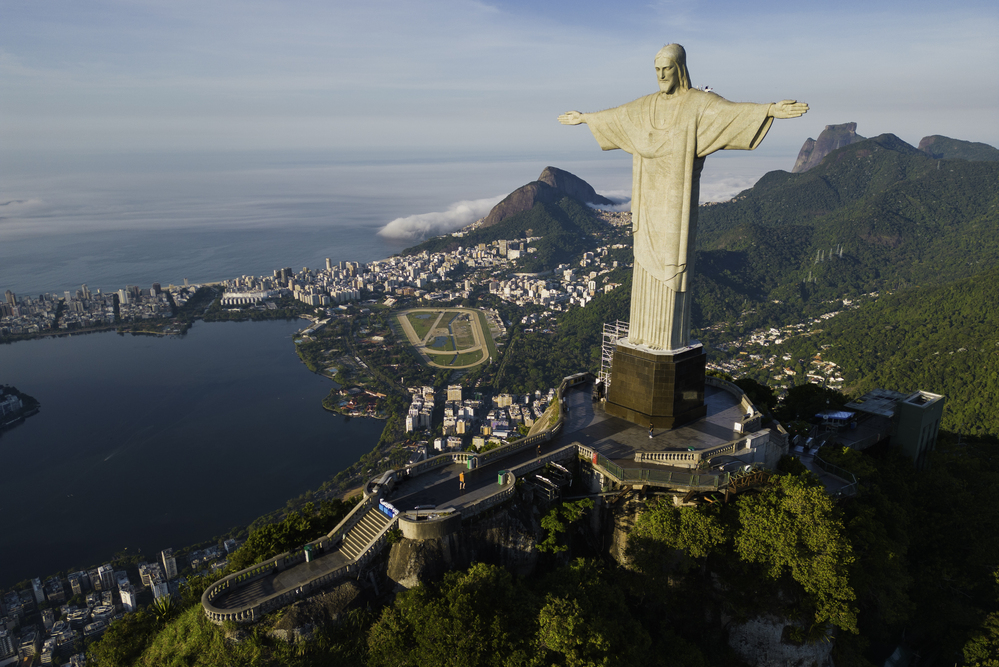Colombia is a vibrant and surprising destination, perfect for those seeking diversity in a single trip. Located in the northwest of South America, the country enchants with its Caribbean beaches, Andean mountains, tropical forests, and cities full of culture and history. From Cartagena to Bogotá, from Medellín to San Andrés, there is always something new to discover.
The joy of the Colombian people, the delicious cuisine, and the contagious rhythm of the local music make the experience even more special. Traveling to Colombia means being enchanted by unforgettable colors, flavors, and landscapes. A country that welcomes and captivates its tourists. There will be no shortage of things to do in Colombia.
Colombia
Understanding a bit about the territory, history, and culture of the country is essential for a successful trip. With this basic information, you can ensure a safe, peaceful, and enjoyable journey. Before knowing what things to do in Colombia during your trip, get to know the country that ranks eleventh as the safest country in South America.
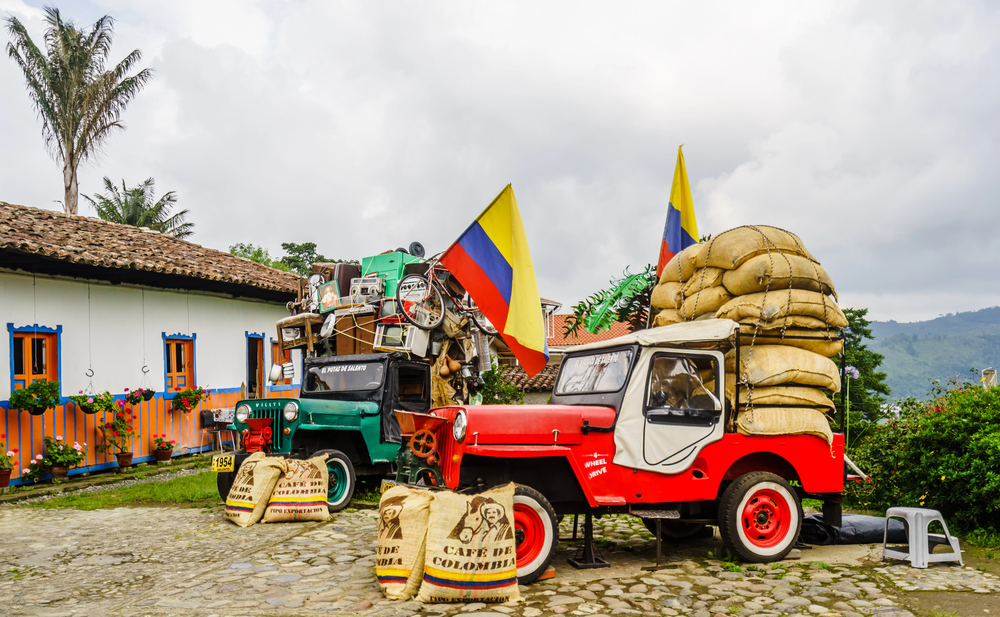
Territory
Colombia is a country with a surprisingly diverse territory, making it an ideal destination for all types of travelers. Located in the northwest of South America, it is the only country in the region bordered by both the Pacific Ocean and the Caribbean Sea. This privileged location offers everything from paradisiacal beaches to tropical jungles and towering mountains.
Republic of Colombia – vector map
The Colombian relief is mainly characterized by the three branches of the Andes Mountains, which cut through the country from south to north and directly influence the climate and culture of the regions. Among these mountains are famous cities such as Bogotá, Medellín, and Cali. To the east, the territory extends over vast plains and Amazonian forests, a less explored area but of great ecological value.
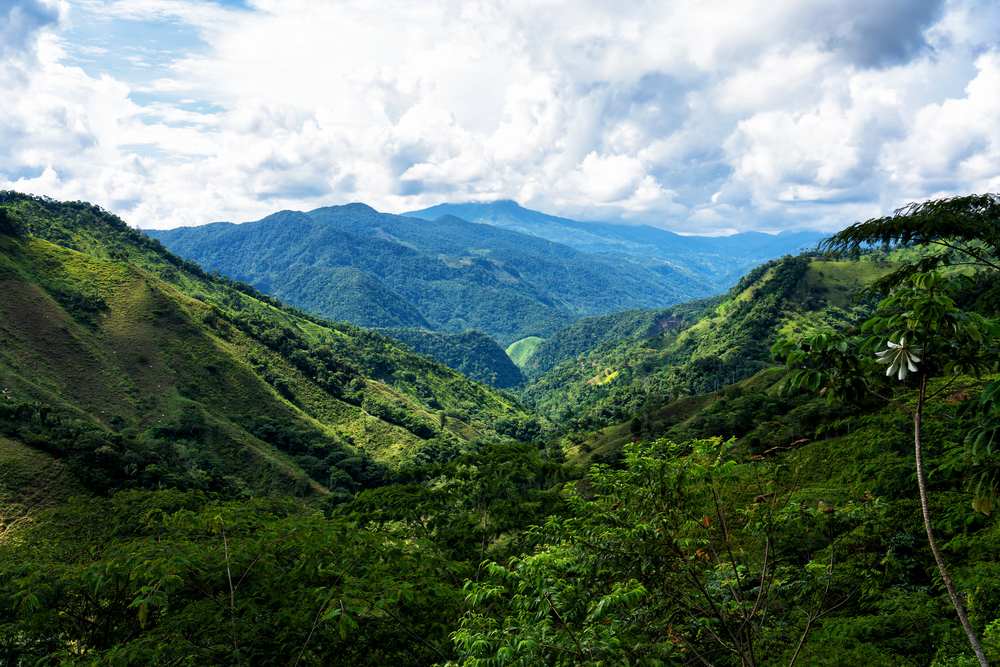
Additionally, Colombia boasts charming tropical islands such as San Andrés and Providencia, located in the Caribbean, which are true havens of crystal-clear waters. There are also desert regions, like La Guajira in the north of the country, which impress with their dunes and arid landscapes.
History and Culture
Colombia has a rich history marked by contrasts. Before the arrival of the Spanish, the region was inhabited by indigenous peoples such as the Muisca, Quimbaya, and Tairona, who left an important legacy, especially in art, agriculture, and social organization. With the Spanish colonization in the 16th century, Colombia became part of the Viceroyalty of New Granada, living under European rule for centuries until gaining independence in 1810.
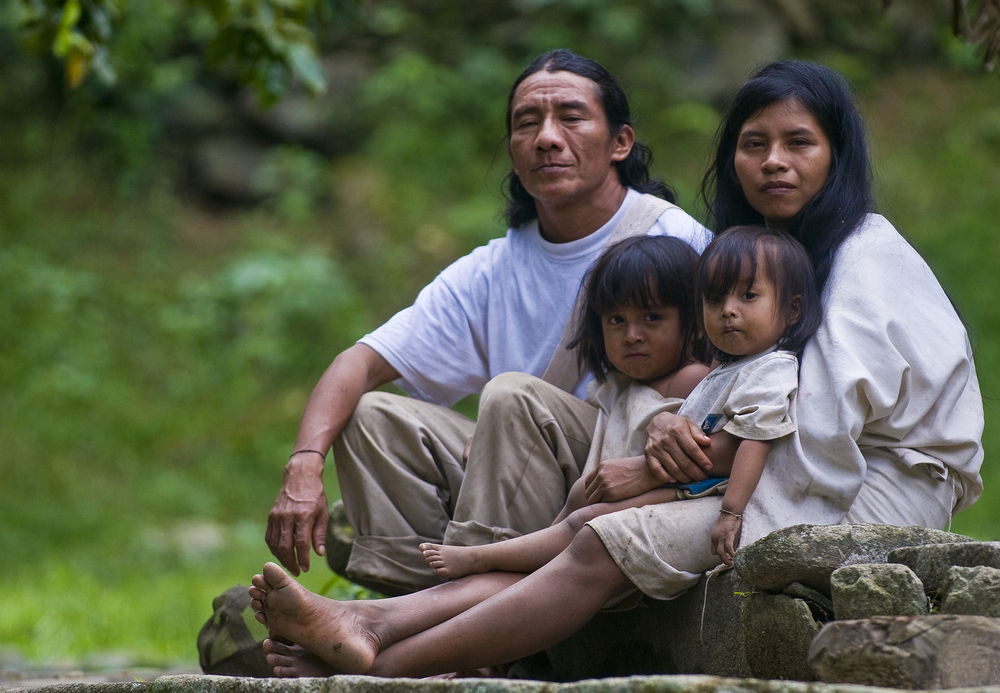
Over time, the country has faced various challenges, including internal conflicts and the impact of drug trafficking. However, in recent decades, Colombia has undergone an impressive transformation, becoming safer and opening its doors to tourism, with great pride in its culture and identity.
Colombian culture is a vibrant mix of indigenous, African, and Spanish influences. This blend is evident in the music, dance, cuisine, and popular festivals. Rhythms such as cumbia, vallenato, and salsa are an essential part of Colombian life — it’s almost impossible to walk down the streets without hearing a lively beat playing somewhere.
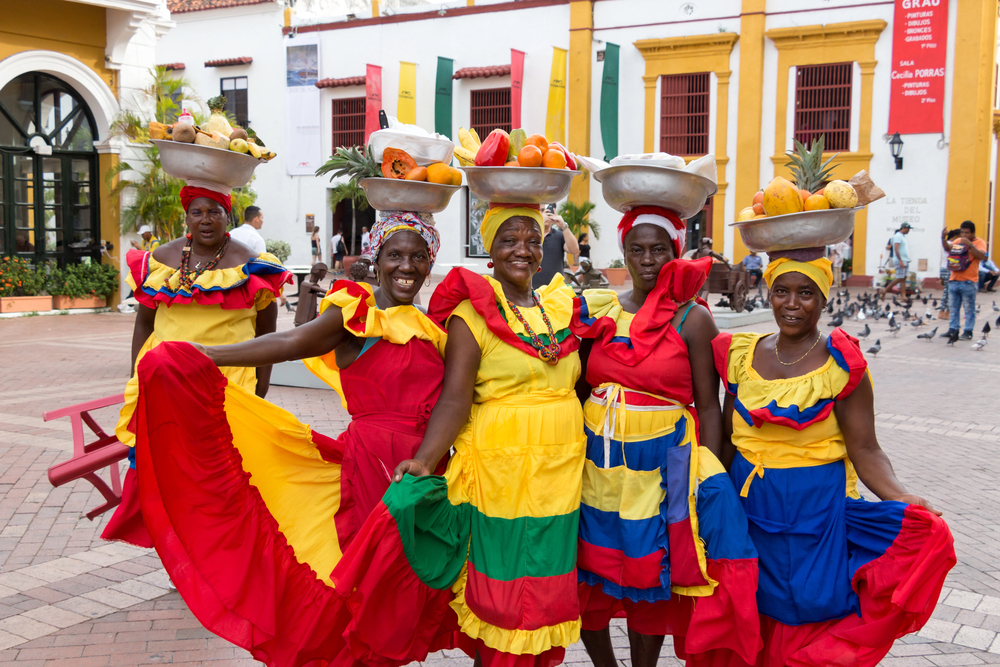
Colombia is also a country passionate about literature, with one of its greatest icons being the writer Gabriel García Márquez, author of the famous book “One Hundred Years of Solitude.” Art, crafts, and regional traditions also stand out in local fairs and markets.
Each region of the country has its own cultural expressions, customs, and flavors. Traveling through Colombia is like visiting several countries in one: from the cold mountains of the Andes to the Caribbean rhythms, from the Amazon jungle to the northern deserts, all with the contagious joy of a people who know how to celebrate life.
Main destinations
I must confess that I was surprised by the number of things to do in Colombia available to enjoy during the trip and the beauty of everything… the old buildings, vibrant colors, beaches, and national park! It is a country full of incredible experiences for those who love nature, culture, history, and beaches.
One of the most popular destinations is Cartagena de Indias, a historic city by the Caribbean Sea. Walking through the cobblestone streets of the historic center, surrounded by walls, is like stepping back in time. Additionally, the city offers beautiful beaches and nearby islands, such as the Islas del Rosario, perfect for a day of sun and diving.
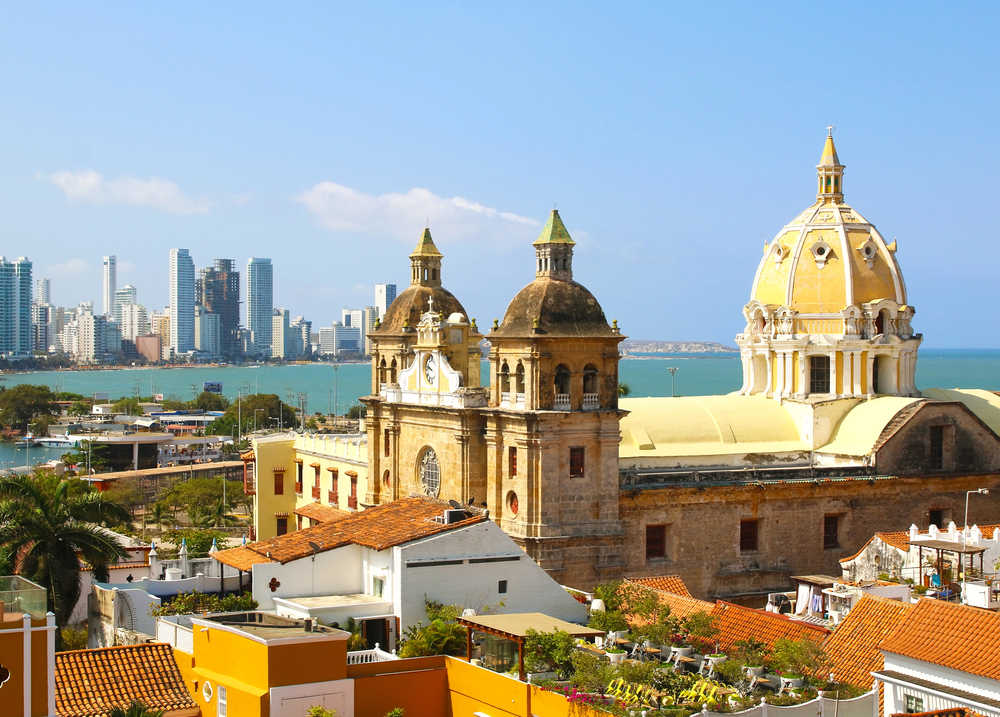
Bogotá, the capital, also deserves a visit. The La Candelaria neighborhood enchants with its colonial buildings, interesting museums (such as the Gold Museum), and cozy cafes. Don’t miss the climb up Cerro Monserrate, from where you can get a panoramic view of the city.
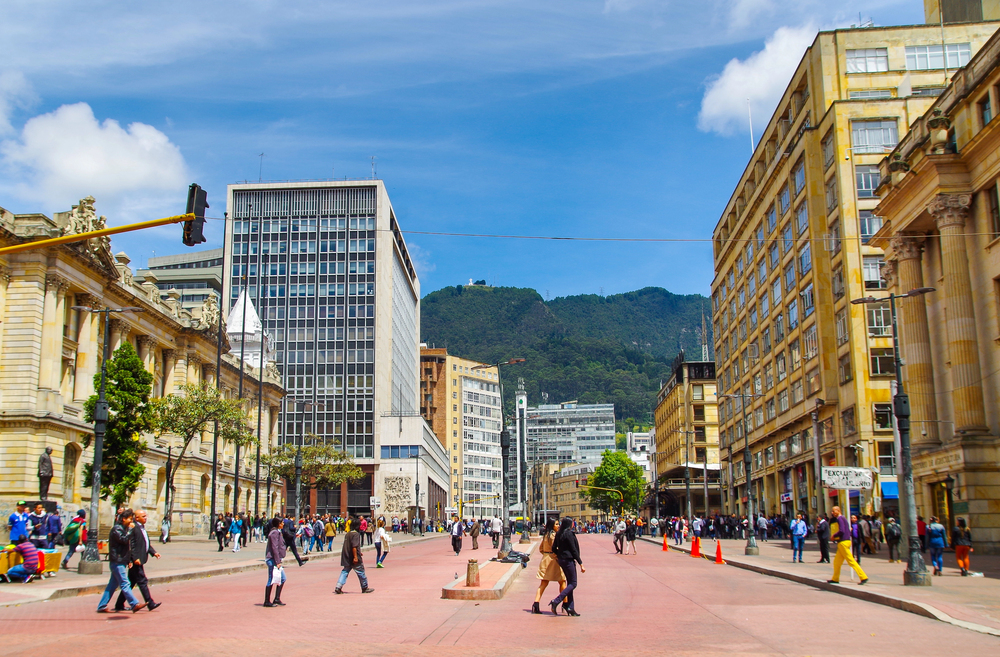
Medellín, once known for its violence, is now a symbol of transformation. It is a modern city with a pleasant climate and attractions such as Parque Arví, the Metrocable (a cable car with incredible views), and the sculptures of artist Fernando Botero in Plaza Botero.
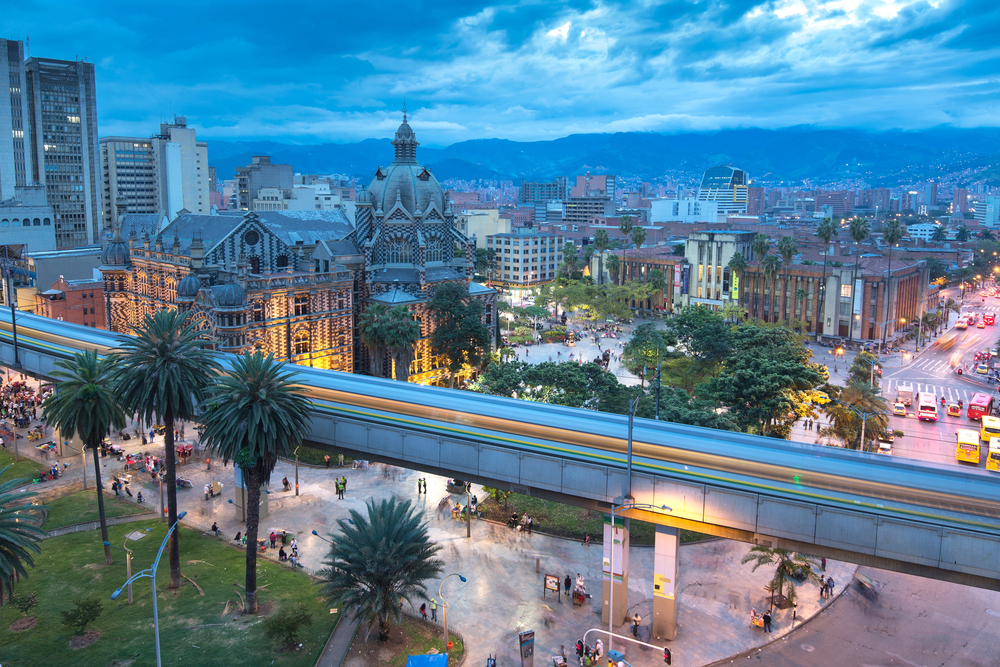
For nature lovers, Tayrona National Park is a must-visit. Located on the northern coast near Santa Marta, it combines forest trails with breathtaking beaches. For those seeking something more exotic, you can visit the La Guajira Desert, where the sea meets dunes and arid landscapes.
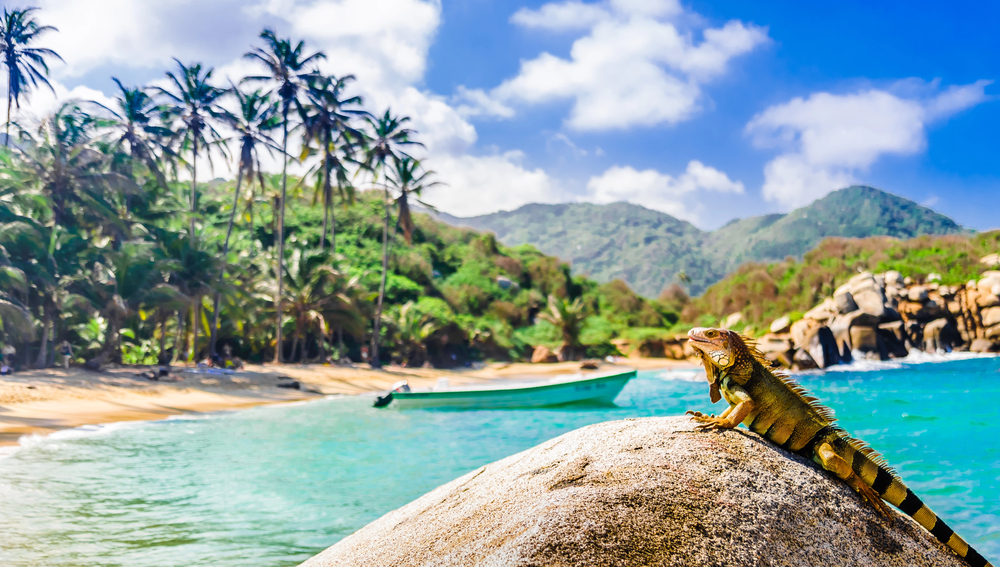
Finally, there are the Caribbean islands of San Andrés and Providencia, known for their sea of seven colors. It is a perfect destination to relax, snorkel, and enjoy the tropical climate.
Colombia is a country for all tastes. In each region, you will find a unique combination of culture, nature, and hospitality. Whether in the mountains, on the coast, or in vibrant cities, there will always be something special to do.
Cartagena de Indias
Cartagena de Indias is one of the most charming destinations in Colombia and a must-see for anyone visiting the country. Located on the shores of the Caribbean Sea, the city combines history, colonial architecture, culture, and paradisiacal beaches, all with a tropical climate and welcoming people. Here are the things to do in Colombia in Cartagena:
The main attraction is the Historic Center, also known as the Walled City. Walking through its cobblestone streets, among colorful houses, flowered balconies, and old churches, is a unique experience. There you can visit the Clock Tower, Plaza Santo Domingo, Cartagena Cathedral, and various local craft shops.
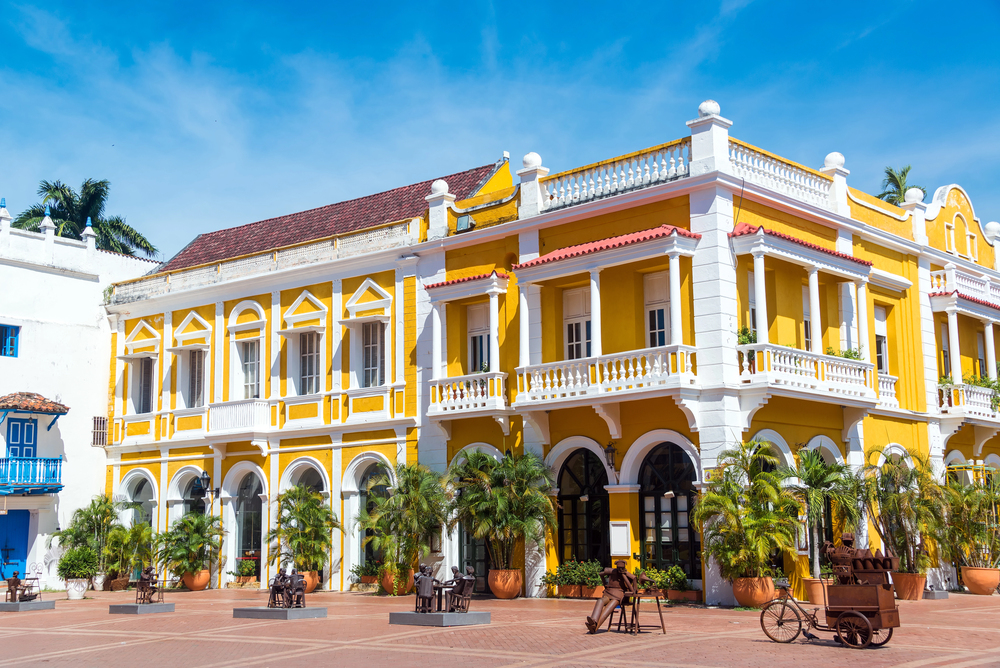
Another must-see tour is visiting the Castillo de San Felipe de Barajas, an impressive fortress built by the Spanish to protect the city from invasions. The view from the top is beautiful and worth the climb.
For those who want to relax, the beaches of Bocagrande, near the center, are good options. However, if you are looking for a quieter paradise, it is worth taking a boat to the Rosario Islands, with crystal-clear waters perfect for snorkeling and diving.
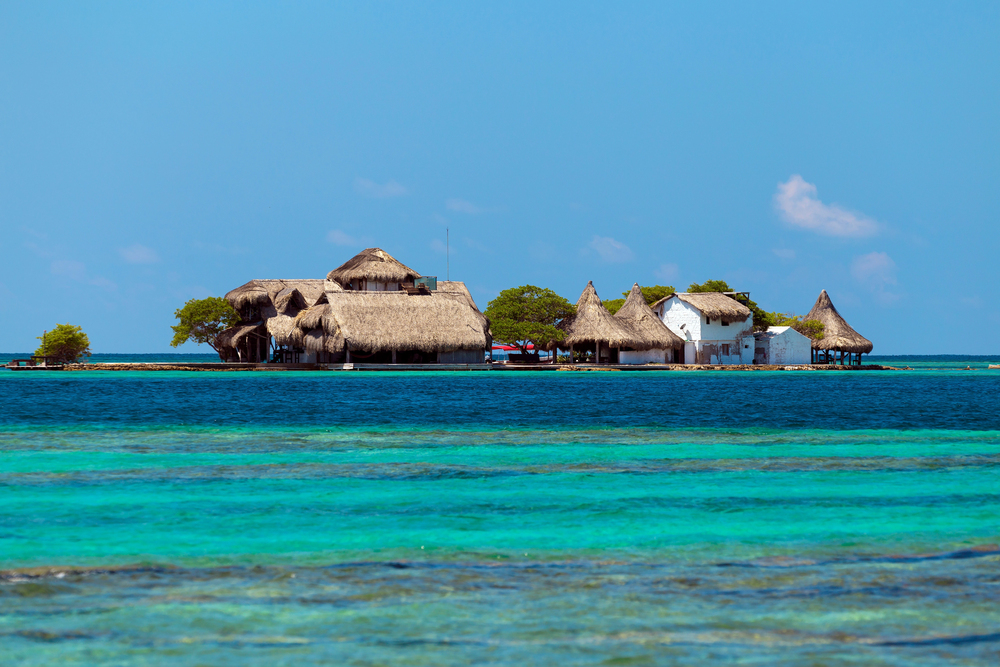
Cartagena is also rich in culture. You can watch traditional dance performances in the squares, visit the Zenú Gold Museum, or the Palace of the Inquisition, which tells part of the city’s colonial history.
At night, the city takes on a special charm. The bars and restaurants become lively, and many offer live music and delicious typical dishes, such as fresh seafood and the famous coconut rice.
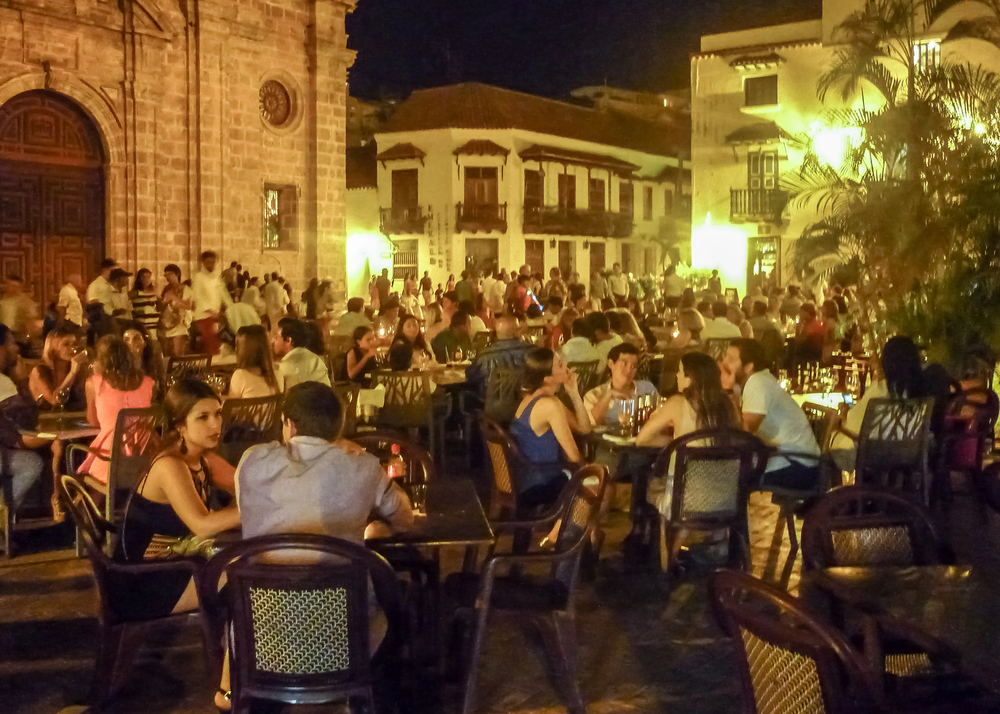
Whether to explore history, enjoy the beach, or take advantage of the nightlife, Cartagena de Indias is a destination that enchants in every detail and leaves unforgettable memories.
Bogotá
Bogotá, the capital of Colombia, is a vibrant city full of surprises. Located in a mountainous region at an altitude of 2,640 meters, it blends history, culture, and modernity in one place. It is the ideal destination for those who want to learn more about Colombian identity.
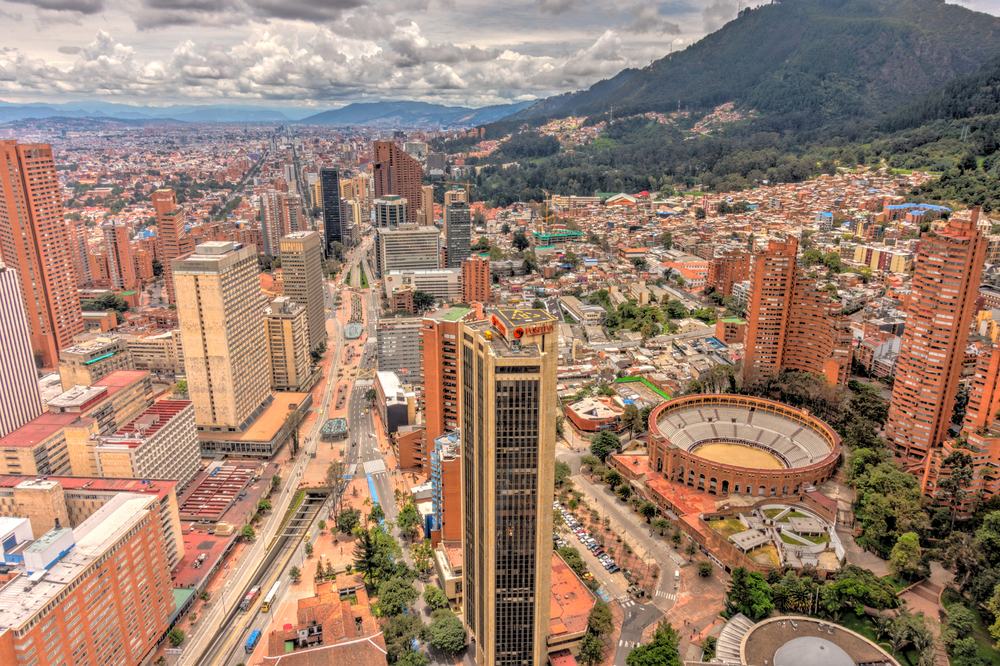
A good starting point is the La Candelaria neighborhood, the historic center of the city. With its cobblestone streets, colorful houses, and colonial architecture, the area is home to important tourist attractions such as the Gold Museum, with an impressive collection of pre-Columbian pieces, and Bolívar Square, surrounded by historic buildings.
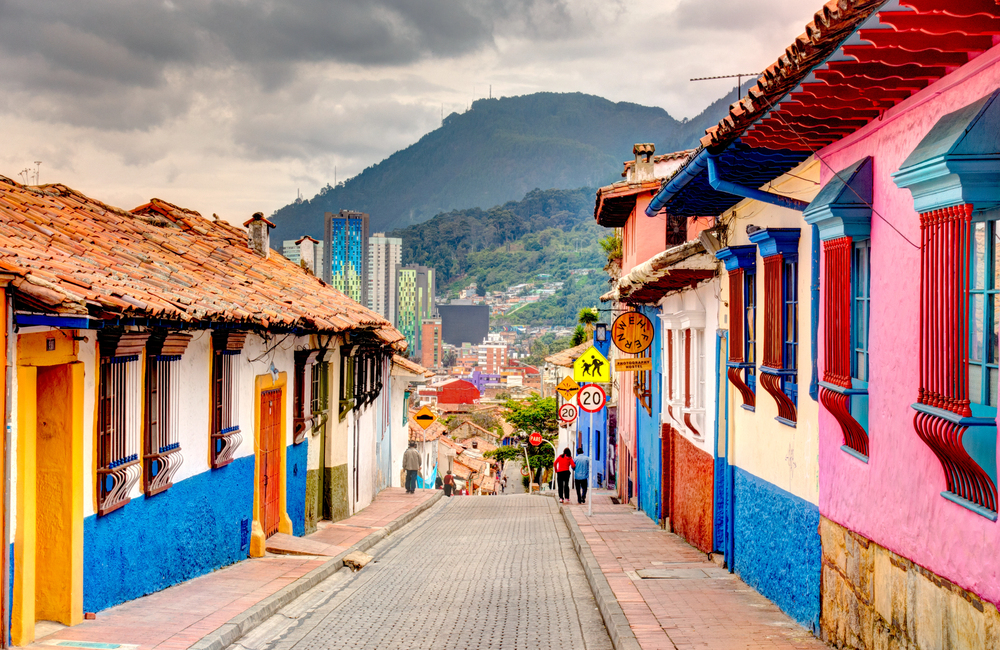
Another must-see tour is climbing Cerro Monserrate, a mountain that offers an incredible view of the entire city. You can reach the top by funicular, cable car, or hiking trails. At the top, besides the view, there is a church, shops, and restaurants.
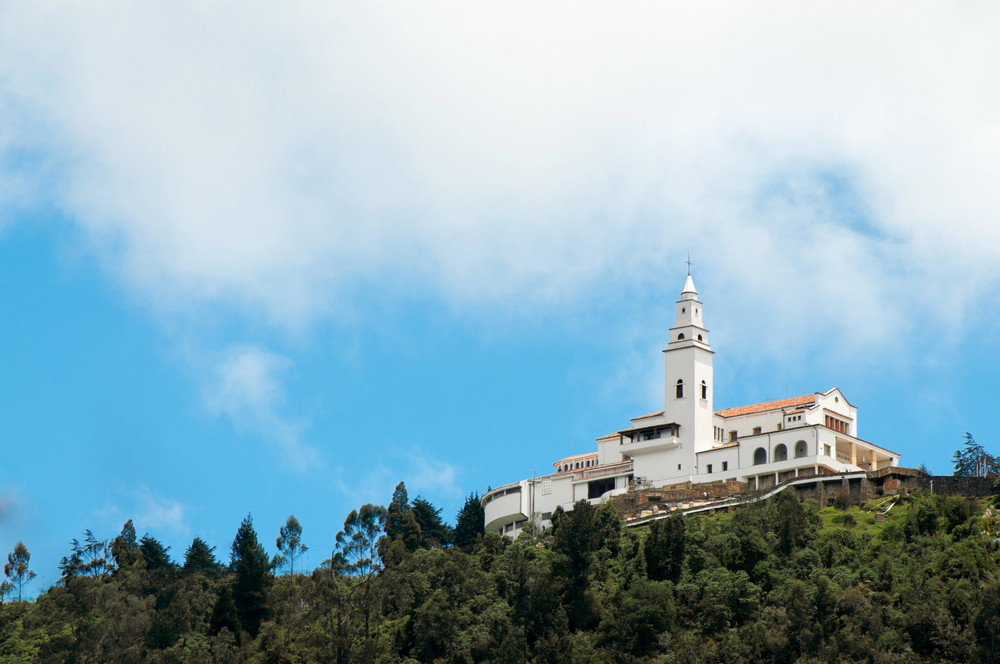
Bogotá also has great museums, such as the Botero Museum, featuring works by the famous Colombian artist Fernando Botero, known for his rounded and expressive figures. For those who enjoy urban art, the Graffiti Tour is a great way to explore the city and see the murals that fill Bogotá with color and creativity.
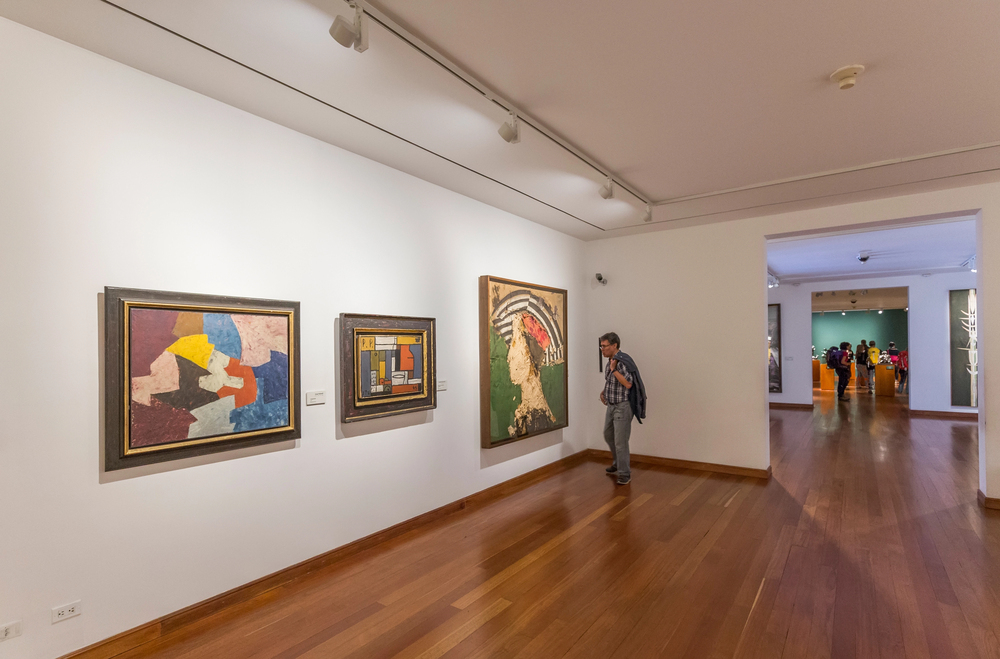
In the outskirts of the city, it is worth taking a day trip to the Salt Cathedral of Zipaquirá, a church built inside a salt mine — one of Colombia’s most impressive attractions.
Bogotá’s nightlife is lively, with bars, cafes, and restaurants spread across neighborhoods like Zona T and Usaquén. The local cuisine is also a highlight, with dishes such as ajiaco (a typical soup) and stuffed arepas.
Bogotá is a city that combines tradition and modernity, offering unforgettable cultural, visual, and gastronomic experiences.
Medellín
Medellín, known as the “City of Eternal Spring” for its pleasant climate year-round, is one of Colombia’s most charming destinations. The city, which once had a negative reputation in the past, has completely transformed and is now modern, safe, and full of attractions for all tastes.
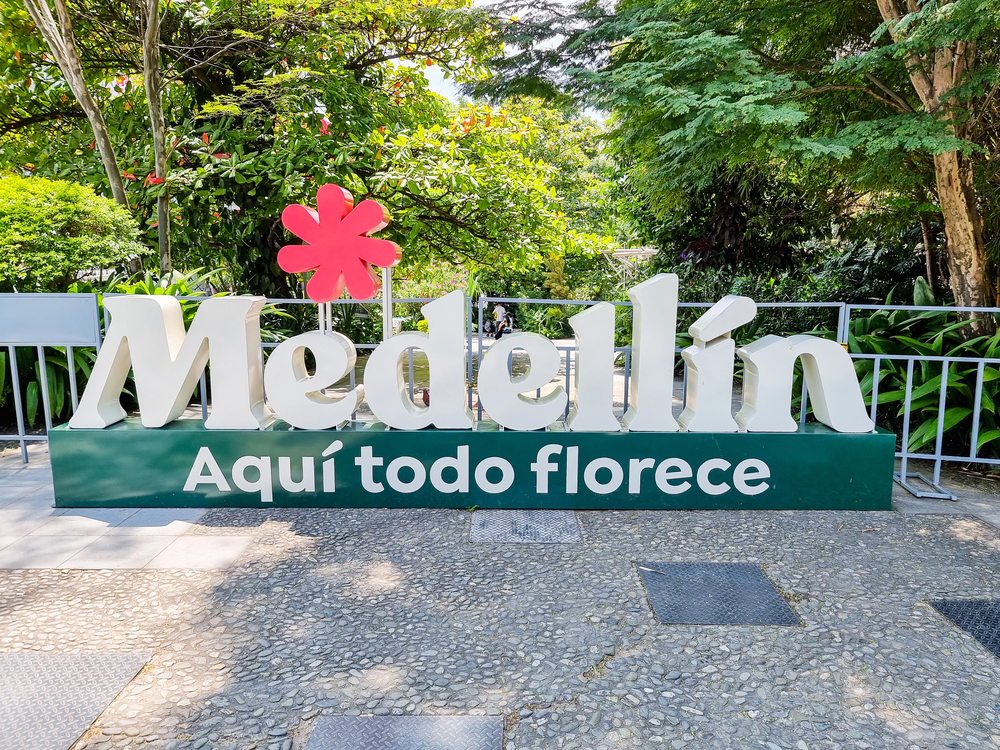
One of the first recommended tours is the Metrocable, a cable car that connects neighborhoods on the mountainsides to the city’s metro. Besides being an efficient means of transportation, the route offers incredible views of the city. At the end of the journey, you can visit Parque Arví, an ecological park with trails and plenty of contact with nature.
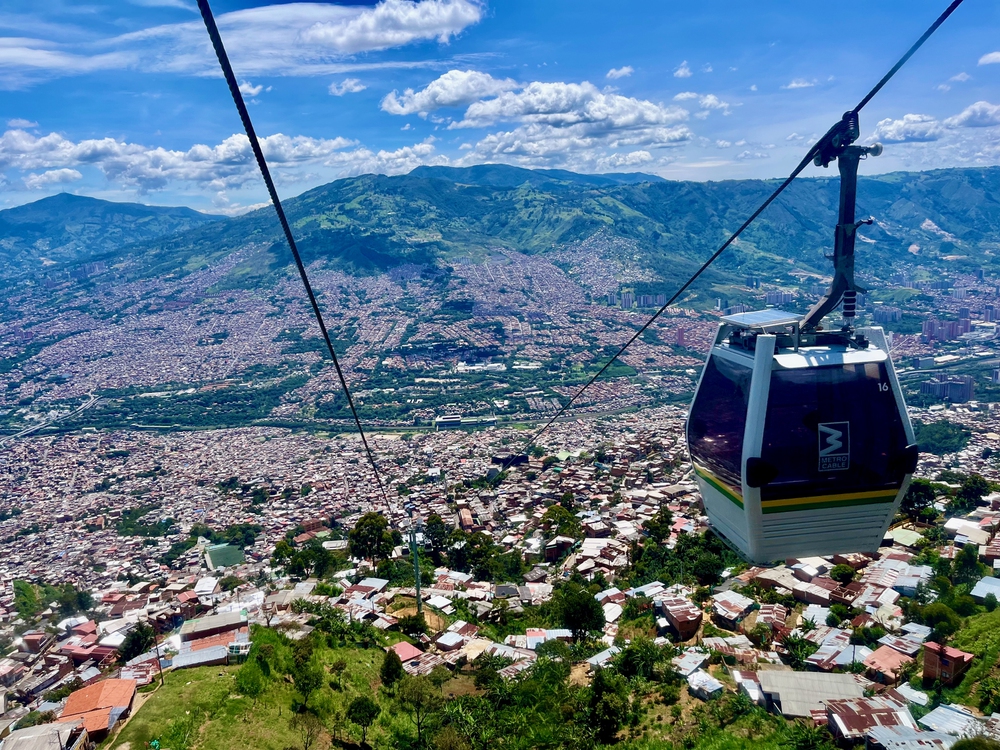
In the city center, Botero Plaza is a must-see. There you will find several sculptures by the Colombian artist Fernando Botero, with his rounded and curious figures. Around the plaza, you can visit the Museum of Antioquia, which tells the history of the city and houses more works by Botero.
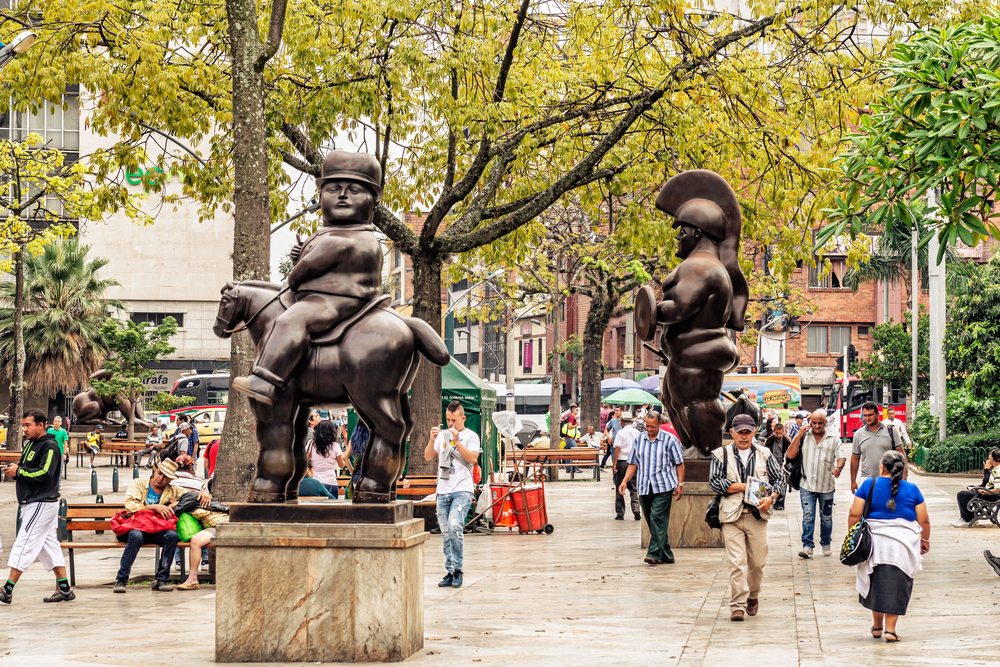
Another interesting place is Comuna 13, a former symbol of urban violence that now breathes art and hope. A guided tour there showcases the famous graffiti murals, colorful staircases, and cultural spaces that reflect the strength of the community.
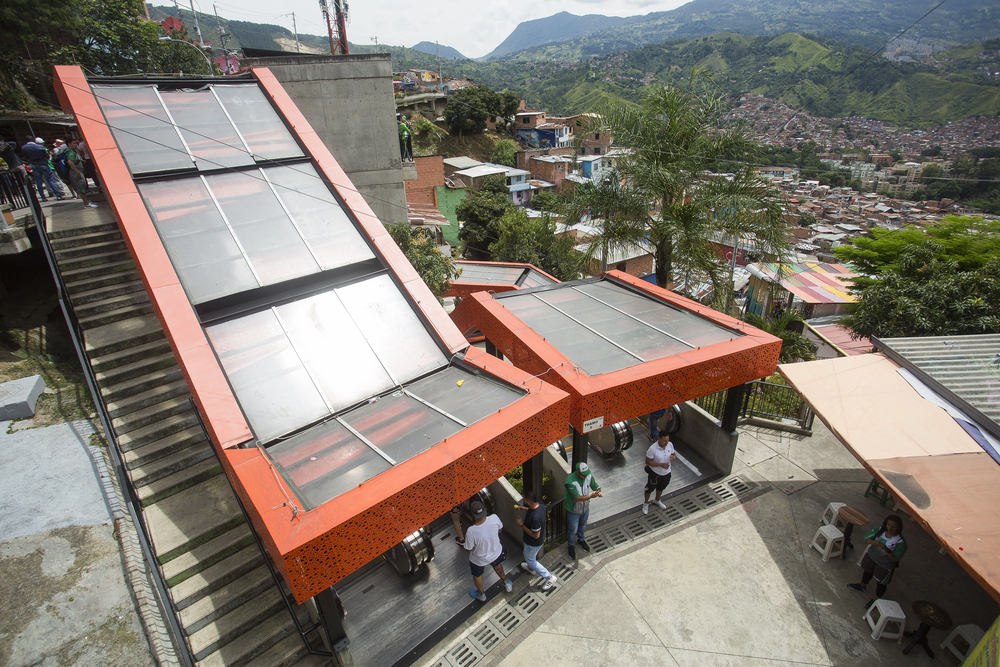
For those who enjoy technology and innovation, Parque Explora is a great option. It is an interactive museum with science themes, ideal for both adults and children. For those who prefer something more tranquil, a stroll through the Botanical Garden is perfect for relaxing amidst greenery.
At night, the city comes alive in the neighborhoods of El Poblado and Laureles, with bars, restaurants, and live music. The local cuisine also deserves a mention, with dishes such as bandeja paisa, a complete and delicious meal.
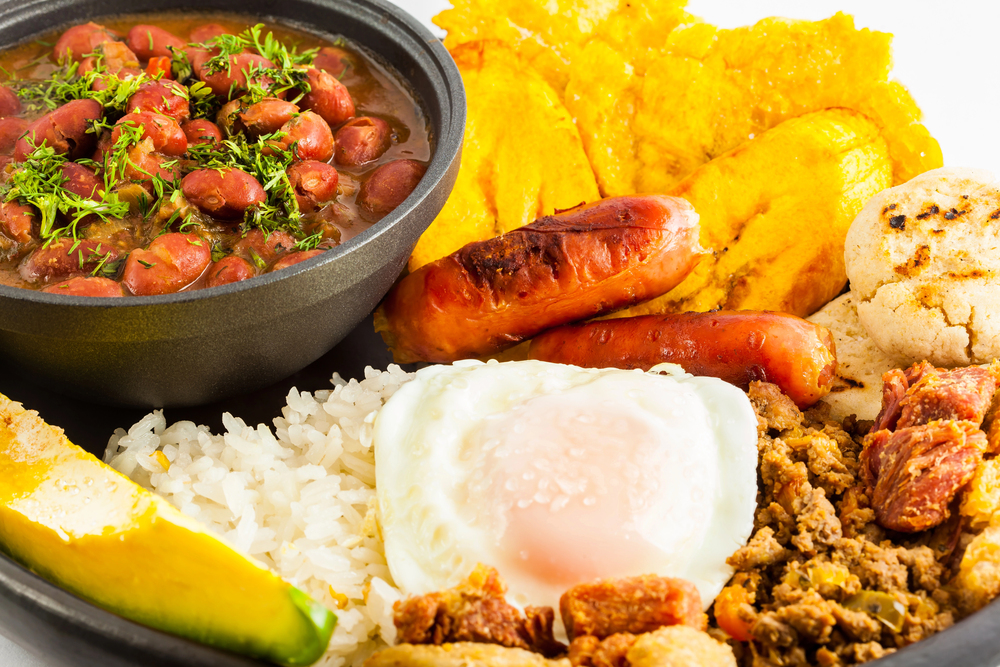
Medellín is an example of resilience and creativity, offering cultural, social, and natural experiences that make any trip memorable.
Tayrona National Park
Tayrona National Natural Park is one of the most impressive destinations in Colombia. Located on the Caribbean coast, near the city of Santa Marta, this natural paradise combines white sandy beaches, crystal-clear sea, forest-covered mountains, and rich wildlife. It is the perfect place for those who love nature, adventure, and tranquility.
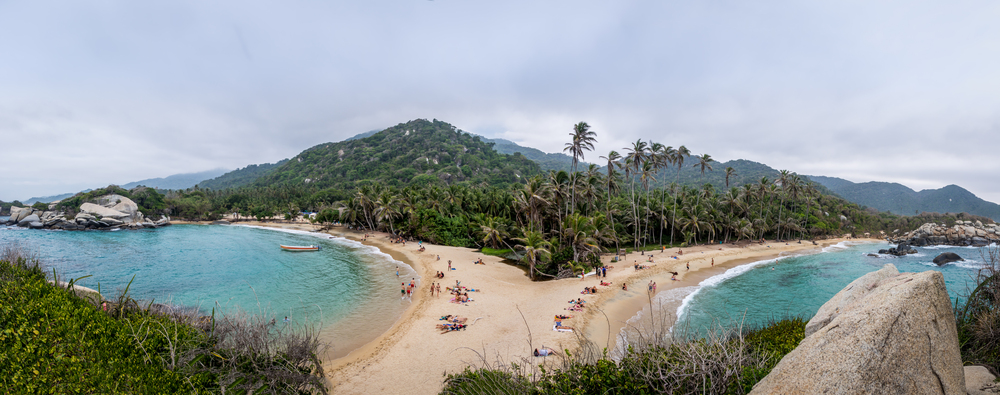
One of the main attractions of the park is its beaches. Among the most famous are Cabo San Juan, La Piscina, and Arrecifes. Each has its own beauty, but all offer incredible landscapes and moments of peace. Some beaches are suitable for swimming, while others, like Arrecifes, are more dangerous for swimming but great for relaxing and taking photos.
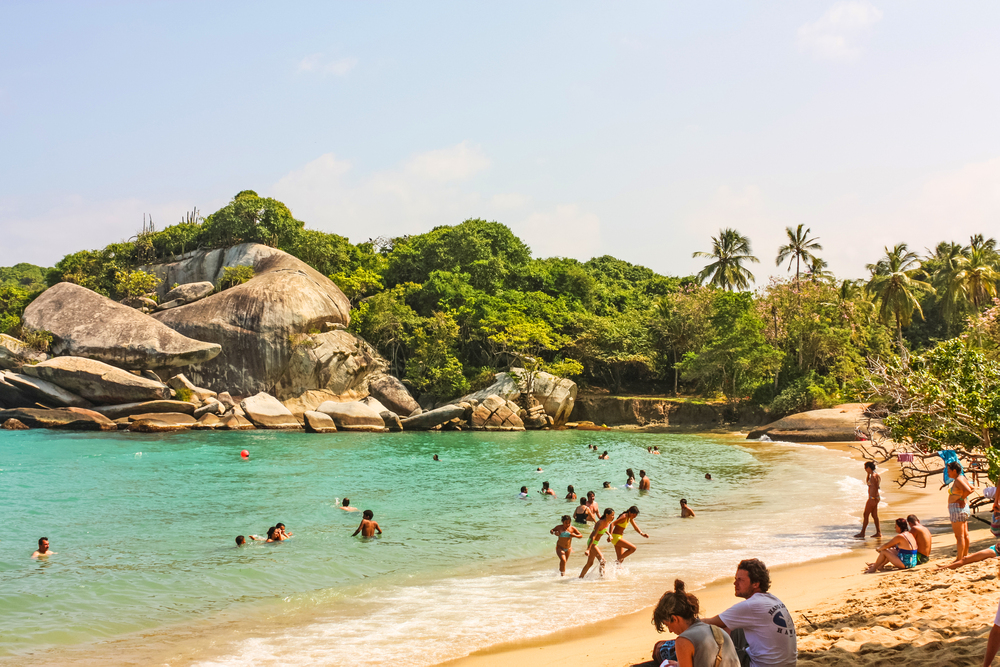
To reach the beaches, visitors need to hike, which is already part of the experience. Walking through the tropical forest allows you to observe monkeys, iguanas, birds, and lush vegetation. The most common trail starts at the El Zaino entrance and leads to Cabo San Juan, taking about 2 to 3 hours of walking.
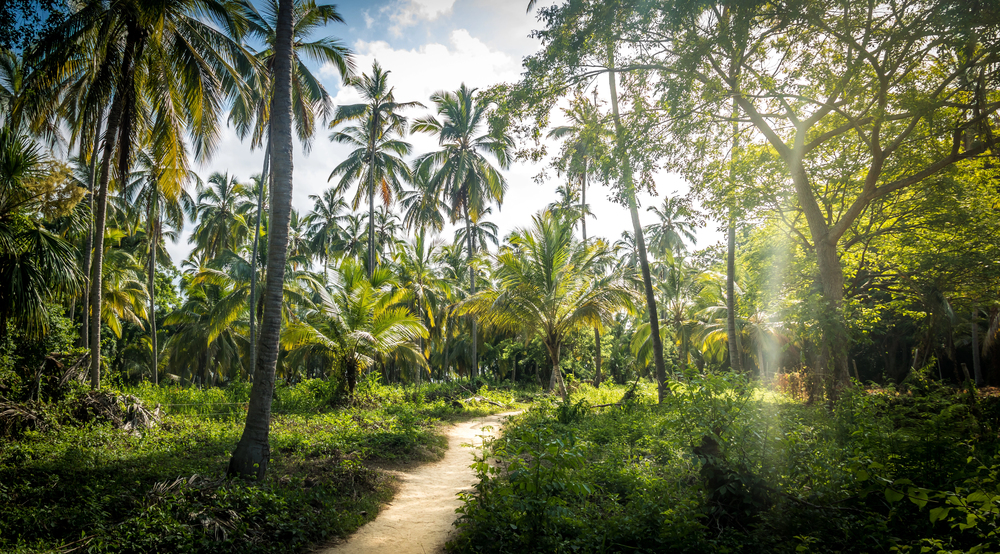
In addition to the beaches and trails, the park also preserves remnants of the Tayrona indigenous culture. One of the most interesting sites is Pueblito, an ancient indigenous village hidden in the forest, accessible by longer trails. It is an enriching experience for those who enjoy history and culture.
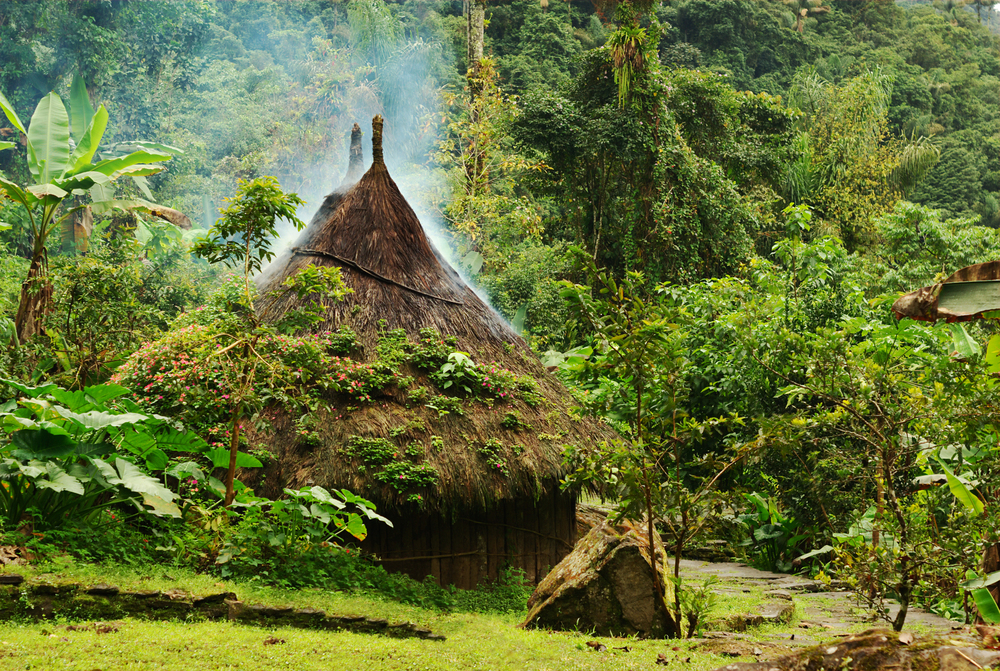
It’s important to remember that the park has a limited number of visitors per day, so it’s good to arrive early or book in advance. It is also recommended to bring water, sunscreen, light clothing, and cash.
Tayrona Park is a destination that combines untouched nature with spirituality and adventure. Ideal for those who want to disconnect from the world and connect with the best of Colombian nature.
Caribbean Islands of San Andrés and Providencia
The Caribbean islands of San Andrés and Providencia, located northeast of Colombia, are true tropical paradises. Known for their crystal-clear waters and breathtaking landscapes, these islands offer a unique experience for those seeking sun, sea, and tranquility. San Andrés is the larger and busier of the two, while Providencia maintains a more rustic and tranquil atmosphere, ideal for relaxation.
In San Andrés, the main attraction is the famous “Sea of Seven Colors,” with different shades of blue and green that enchant any visitor. You can enjoy beaches like Spratt Bight, with infrastructure and great for swimming, or take a boat trip to the Natural Aquarium, where you can swim with colorful fish and even stingrays.
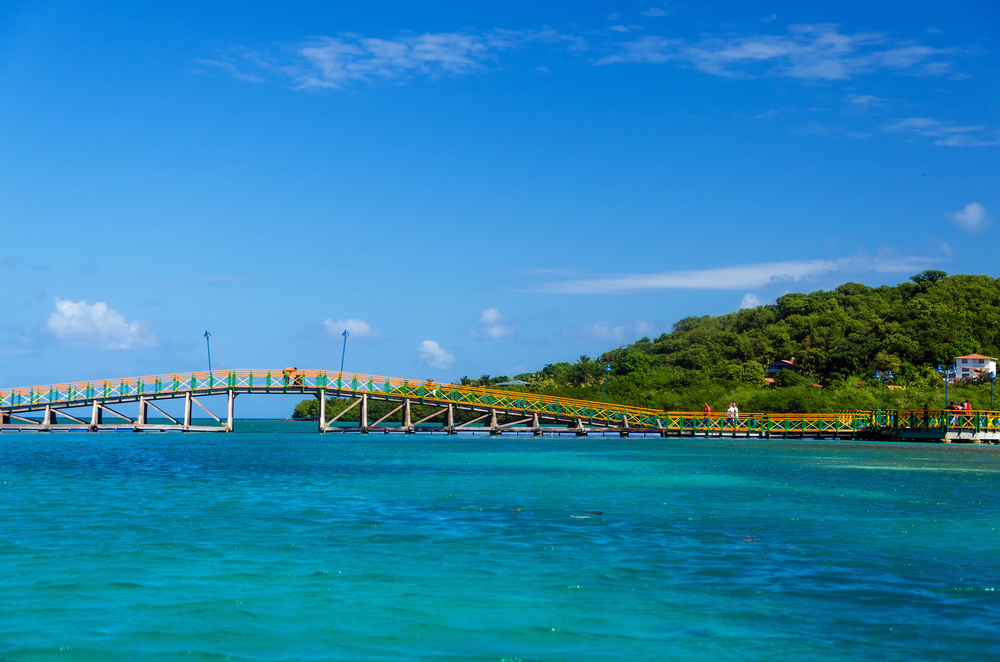
Another unmissable outing is visiting Johnny Cay, a small island with white sand surrounded by palm trees, perfect for enjoying a calm, relaxing day. For those who enjoy diving or snorkeling, the coral reefs around the island offer one of the best underwater experiences in Colombia.
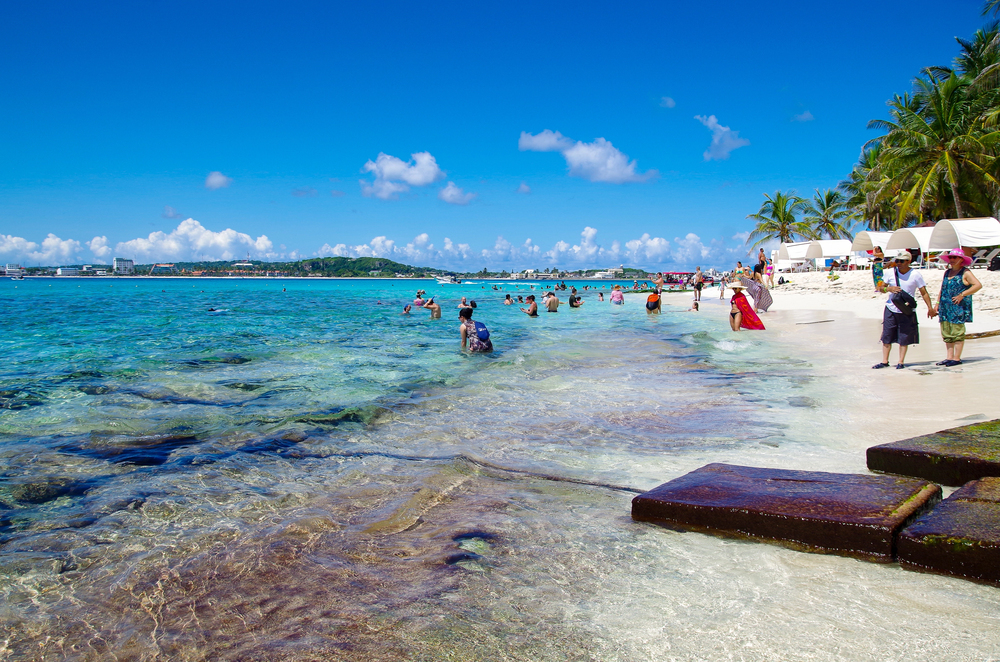
Providencia, on the other hand, is smaller, quieter, and more preserved. Access is by plane or boat from San Andrés. There, the highlight is the McBean Lagoon National Natural Park, ideal for diving and marine life observation. The trails and deserted beaches complete the atmosphere of peace and untouched nature.
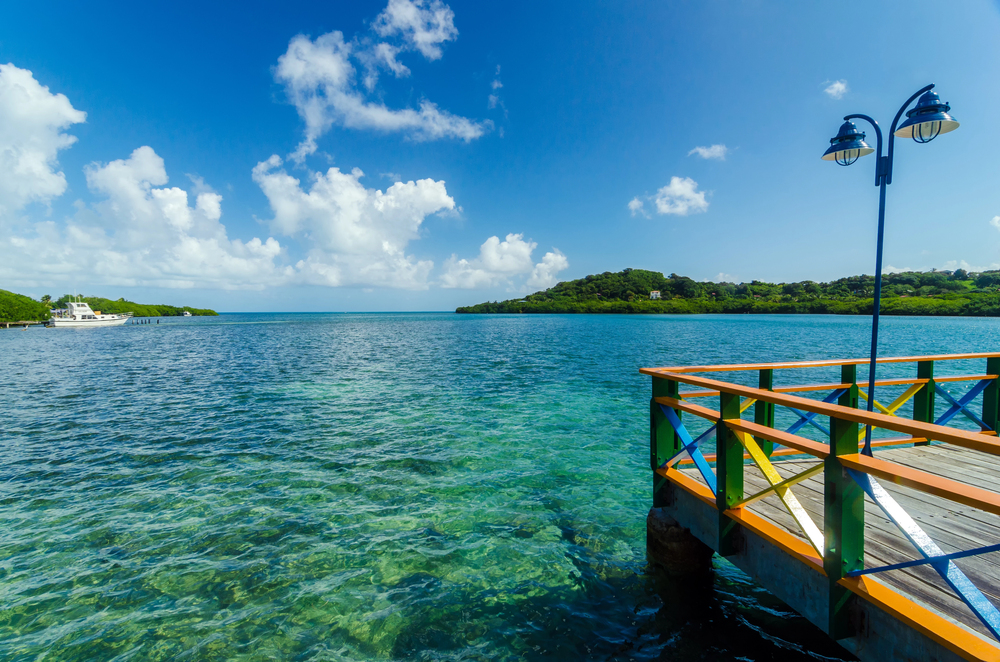
Both islands offer a rich Afro-Caribbean culture, with traditional dishes like fresh fish with coconut rice, reggae music, and a welcoming people. Whether you’re looking to relax, dive, or simply enjoy the scenery, San Andrés and Providencia are perfect destinations for those wanting to experience the best of the Colombian Caribbean.
When to go to Colombia
Choosing the best time to visit Colombia largely depends on what you want to see and do, since the country has a very diverse geography, with mountainous regions, forests, beaches, and large cities. In general, Colombia can be visited year-round, as the weather tends to be stable, especially in higher-altitude cities. Even so, there are certain periods that are more recommended to make the most of your trip.
The dry season, from December to March and from July to August, is considered the best time to travel to most regions. During these months, the weather tends to be more stable with less rainfall, ideal for outdoor activities such as visiting Caribbean beaches, hiking in national parks, or exploring historic cities. If you’re planning to visit places like Cartagena, San Andrés, Tayrona, or Medellín, this is the ideal time.
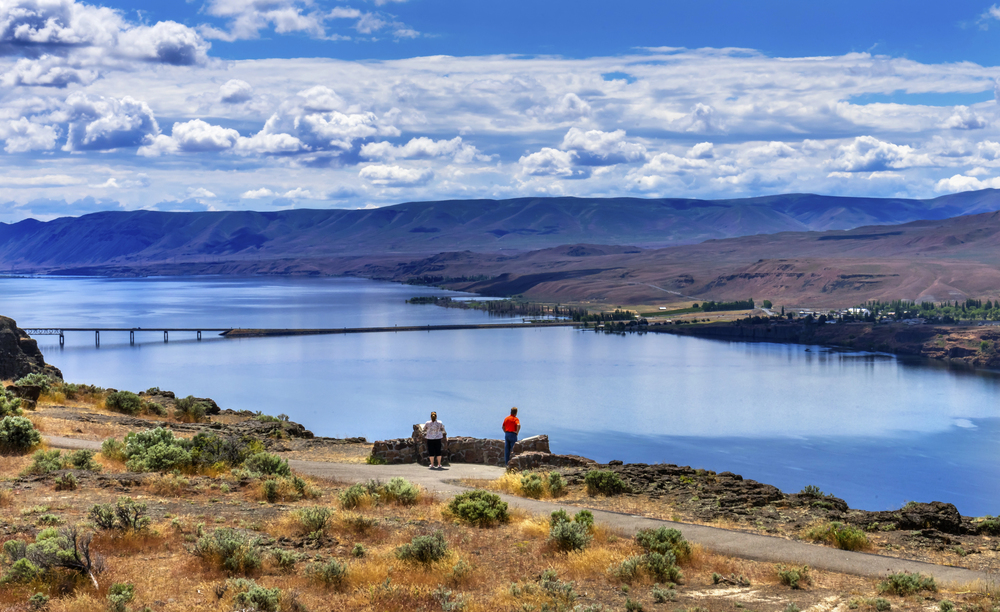
On the other hand, the rainy season takes place between April and June and from September to November. During this period, it’s still possible to travel, but it’s good to be prepared for quick showers, especially in the afternoons. Prices are usually lower, and destinations tend to be less crowded — an advantage for those who prefer to travel more peacefully.
If you’re interested in attending traditional festivals, it’s worth knowing that Colombia hosts interesting events throughout the year, such as the Barranquilla Carnival (in February or March), one of the biggest celebrations in Latin America, and the Feria de las Flores in Medellín (in August), featuring parades, flowers, and lots of music.
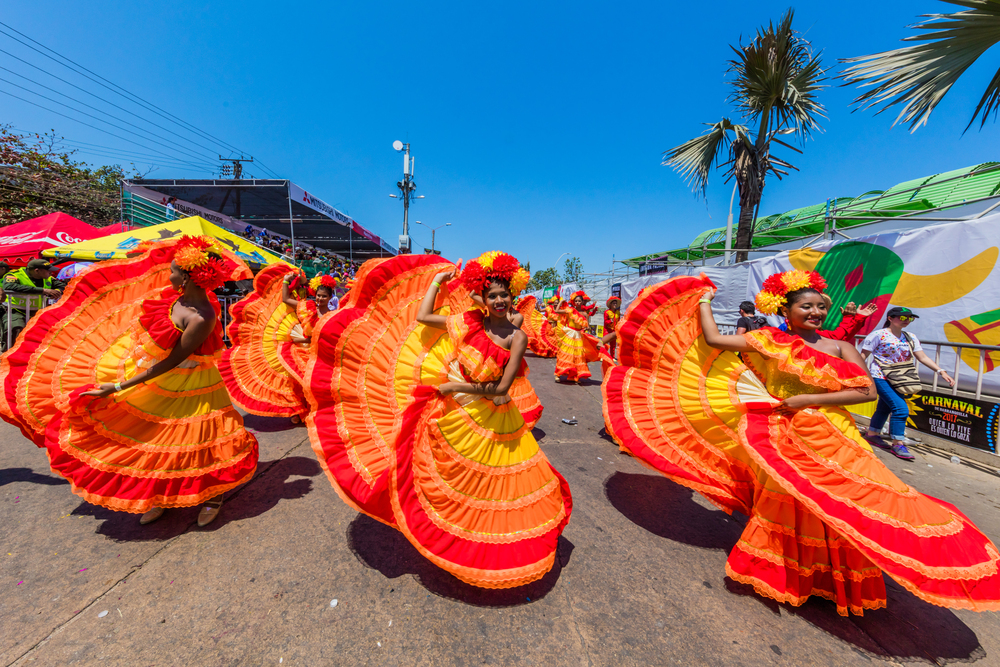
In summary, Colombia has pleasant weather and attractions year-round, but the dry season is more recommended for those who want to make the most of outdoor activities and avoid weather-related surprises.
How to get to Colombia
Getting to Colombia is easier than many people think. The country is well connected with Brazil and other destinations in South America, the Caribbean, North America, and Europe. For those departing from Brazil, the most practical and fastest way is by plane, with direct flights and connections departing from major cities like São Paulo, Rio de Janeiro, and Brasília.
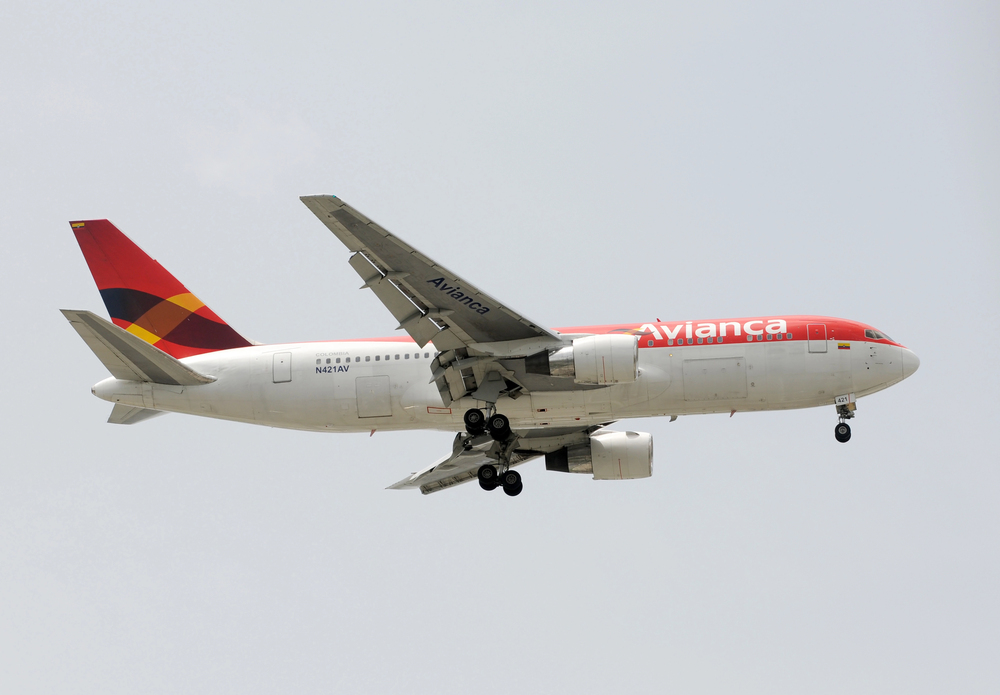
The main air gateway is El Dorado International Airport, in Bogotá, the capital. This is the largest and busiest airport in the country, receiving flights from various parts of the world. In addition to Bogotá, other Colombian cities with international airports include Cartagena, Medellín, Cali, and San Andrés, which makes it much easier for those who already plan to start their trip in these tourist regions.
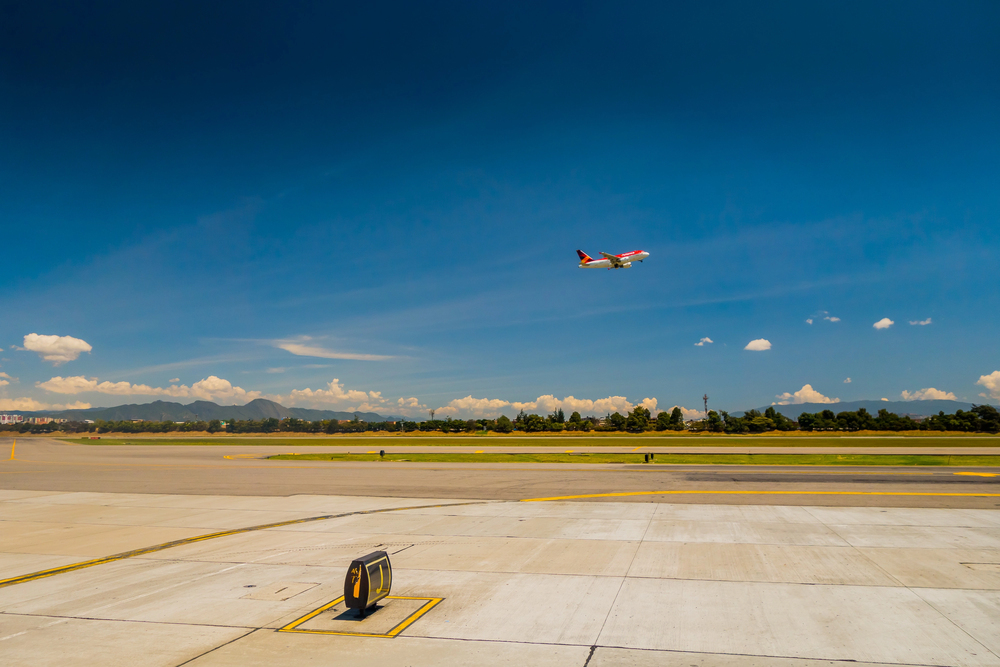
The airlines that usually operate between Brazil and Colombia are Avianca, Latam, Copa Airlines (with a connection in Panama), Gol, and other international carriers. The duration of a direct flight between São Paulo and Bogotá, for example, is around 6 to 7 hours.
To enter Colombia, Brazilian citizens do not need a tourist visa and can stay in the country for up to 90 days. It is only necessary to present a valid passport or, in the case of direct flights, even an RG (Brazilian national ID) in good condition and issued less than 10 years ago is accepted. However, it is always best to travel with a passport. The yellow fever vaccine is also recommended, especially for those visiting forest regions.
Another important tip: always have your return ticket and proof of accommodation on hand, as these documents may be requested at immigration.
With everything ready, just board and enjoy the beauty of Colombia!
